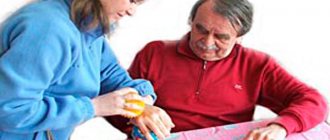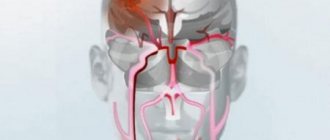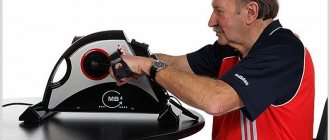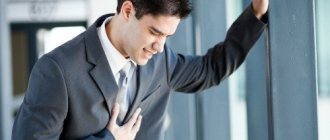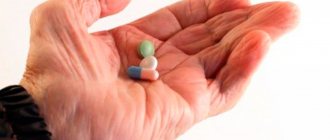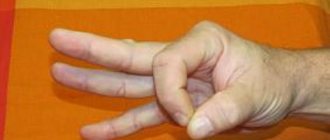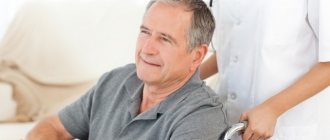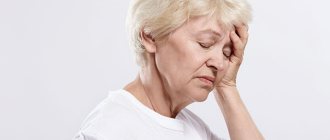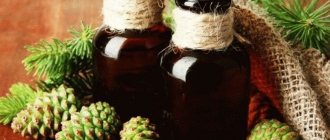People tend to fear death: from AIDS or cancer, from an accident or the actions of another person. However, the cardiovascular system, which plays a key role in the body, is often forgotten. Stroke does not seem to be the most likely option, but, meanwhile, it is the second most common cause of death in adults. You should start worrying about it early - after 50, the chances begin to increase exponentially.
Preventing stroke is the best way to avoid it.
Types of stroke and risk factors
A stroke is an acute circulatory disorder in the brain. In this case, irreversible changes occur in the brain cells and their death. The disease is often fatal, and if a person survives, he is left with lasting consequences in the form of motor impairments and intellectual disorders. The patient may experience paresis of the limbs, unilateral paralysis, disturbances in gait, speech, memory, thought processes, and attention. Such phenomena often lead to disability.
A stroke can occur due to a rupture, sudden spasm, or blockage of one or more cerebral vessels by a blood clot.
Video about the problem
There are two types of strokes.
- The hemorrhagic appearance is often a complication of hypertension. It is a hemorrhage into the tissue or membranes of the brain, and occurs due to the rupture of one or more blood vessels. Brain edema develops, which leads to irreversible consequences. The trigger for hemorrhage can be a hypertensive crisis, sudden physical exertion, severe stress, heat stroke, or traumatic brain injury.
- Ischemic stroke is a heart attack, that is, necrosis, necrosis of a separate area of the brain, which occurs due to a sharp lack of blood supply due to vascular spasm or blockage of a vessel (several vessels) with a blood clot or cholesterol plaque. This type of disease occurs in 80% of cases.
Stroke can be of two types: hemorrhagic occurs due to a ruptured vessel, and ischemic occurs due to a disruption in the blood supply to a separate area of the brain.
Stroke can happen even in apparently healthy people. There are many reasons for a brain stroke.
Among them are the following pathologies:
- hypertonic disease;
- heart diseases - arrhythmias, endocarditis, defects;
- diabetes;
- atherosclerosis;
- increased blood cholesterol levels;
- overweight;
- blood clotting disorder.
Those most at risk of developing acute brain damage are:
- mature and elderly people - after 45–55 years;
- men (get sick more often than women);
- with a family history (close relatives had strokes);
- having bad habits - addiction to alcohol, tobacco, drugs;
- people experiencing severe stress, overwork, severe physical and mental stress;
- taking certain medications for a long time, in particular oral contraceptives.
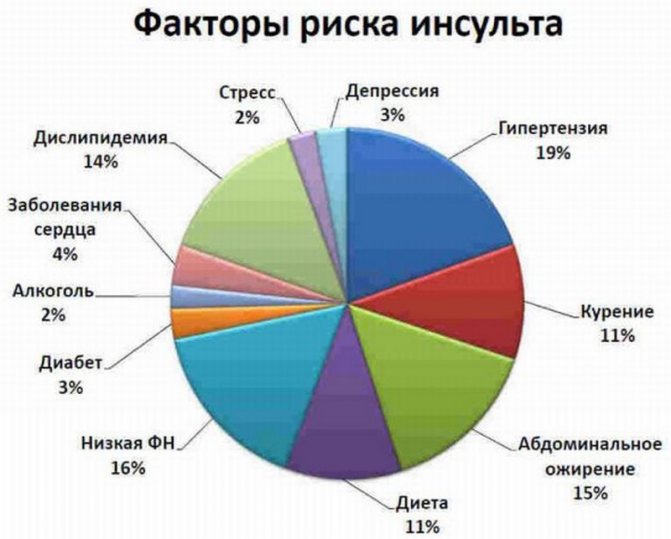
There are many reasons that can cause a stroke, among them hypertension, obesity, smoking, low physical activity, and high levels of cholesterol in the blood occupy a significant place.
A stroke never goes away without consequences. The disease is constantly “getting younger”, that is, an increasing number of people are at risk. Every person must take preventive measures to prevent a “brain catastrophe.”
How to prevent a stroke while doing exercise therapy
Physical therapy exercises will help prevent strokes. Daily physical training improves blood supply to brain tissue and helps strengthen blood vessels. The complex should include exercises that require changing the position of the head: bends, flips and somersaults. During the exercises, you need to monitor your breathing, perform all movements smoothly, without jerking. If you feel dizzy or have dark vision, stop exercising. After rest, the intensity of exercise decreases.
To protect yourself from a stroke, you need to perform the following complex of exercise therapy:
- Starting position: standing, feet shoulder-width apart. Rotate your head clockwise and in the opposite direction (2-3 minutes).
- In the same starting position, raise your hands up, clasping your fingers. Bend forward, simulating chopping wood. Do 8-9 times.
- Without changing the starting position, swing your left foot to your right hand, your right foot to your left hand, touching your palms with your toes.
- Feet shoulder-width apart, knees slightly bent, arms to the sides. Perform rotations as follows: with your left hand forward, and with your right hand back. This exercise helps improve memory and increases the speed of thinking.
- Lying on your back, extend your arms along your body. Raise your legs straight high, support your lower back with your hands. The stand is done for up to 5 minutes, after which you need to carefully lower your legs to the floor.
To avoid developing a stroke, you should dance. During classes, movement coordination is trained, the oxygen content in the blood increases, and the blood supply to the brain improves. At the same time, the vessels become flexible and elastic, the tone of their walls decreases.
To avoid a stroke, it is necessary to actively engage in sports and perform exercises aimed at strengthening and healing the body.
How to protect yourself from brain problems?
Disease prevention measures are divided into:
- primary;
- secondary.
Primary prevention is relevant for people at risk who have never had a stroke, but have diseases that can lead to it.
Secondary prevention aims to prevent relapses in people who have already had a stroke.
Prevention of primary strokes
You can prevent a “brainstroke” only by eliminating the causes that lead to it. To do this, you need to work in several directions.
Arterial pressure
It is important to timely examine the patient, identify arterial hypertension, that is, high blood pressure, and fully treat this condition. Therapy for hypertension consists not only of regularly taking medications that lower blood pressure, but also of lifestyle changes. Adequate physical activity, weight control, giving up alcohol and smoking, a balanced diet, reducing stress levels - these measures should be taken together by every hypertensive patient. To ensure the effectiveness of the measures taken, regular blood pressure monitoring is needed.
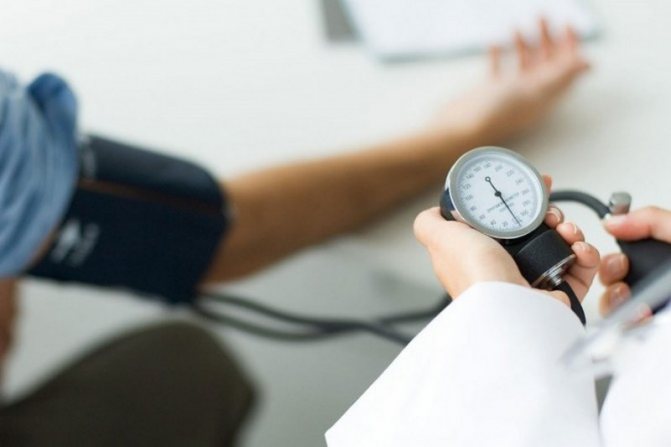
Constant blood pressure monitoring is the most important measure for stroke prevention
Somatic diseases
To prevent a stroke, it is necessary to promptly identify and treat chronic diseases that can serve as catalysts for cerebral ischemia or hemorrhage:
- diabetes;
- chlamydia;
- obesity;
- heart diseases: heart defects;
- myocarditis;
- endocarditis;
- arrhythmia;
- heart attack
Particular attention should be paid to the prevention of diabetes, which increases the risk of stroke by two and a half times. This happens because diabetics have a tendency for their blood to thicken as fluid is quickly eliminated from the body. And blood thickening is the first step towards a cerebral infarction. Proper nutrition and moderate exercise are the best prevention of diabetes.

Diabetes mellitus is a disease that increases the risk of stroke by 2.5 times, so it is necessary to pay special attention to its prevention
Nutrition
Proper nutrition is important in preventing stroke. An inadequate, irrationally composed diet can lead to excess weight gain, which, in turn, provokes the development of cardiovascular pathologies, hypertension, diabetes, and increased cholesterol levels in the blood. High cholesterol levels cause the formation of atherosclerotic plaques on the walls of blood vessels. The diet should be varied and nutritious; it is advisable to reduce the amount of easily digestible carbohydrates and animal fats in the diet. Fried, spicy, salty, fatty foods, smoked foods, sauces, and ketchups are best kept to a minimum. Salt should be consumed as little as possible.

In the prevention of stroke, limiting salt in food plays an important role.
There should be a sufficient amount of fresh fruits and vegetables on the table.
- Plant foods high in potassium, magnesium, and folic acid are especially useful: bananas;
- prunes;
- beet;
- spinach;
- beans;
- pumpkin;
- eggplant;
- radish;
- cabbage.
- apples;
- cereals;
- fish;

Proper nutrition plays a very important role in the prevention of stroke - preference should be given to plant foods
You should try to maintain your weight within your normal range: sudden weight loss and mono-diets are just as harmful to the cardiovascular system and the body as a whole, just like extra pounds.
Physical activity and lifestyle
Movement and feasible physical activity are an important component of stroke prevention. There can be no health without a proper daily routine, an optimal balance of rest and activity. Adequate sleep, sufficient time in the fresh air, morning exercises, if possible, playing sports (running, swimming, cycling) - all this has a positive effect on the general condition, strengthens the immune system, heart and blood vessels. Physical exercise lowers blood pressure, cholesterol levels in the blood, and helps get rid of excess weight. At a minimum, you need to accustom yourself to doing morning exercises and walking in the fresh air for at least half an hour every day.
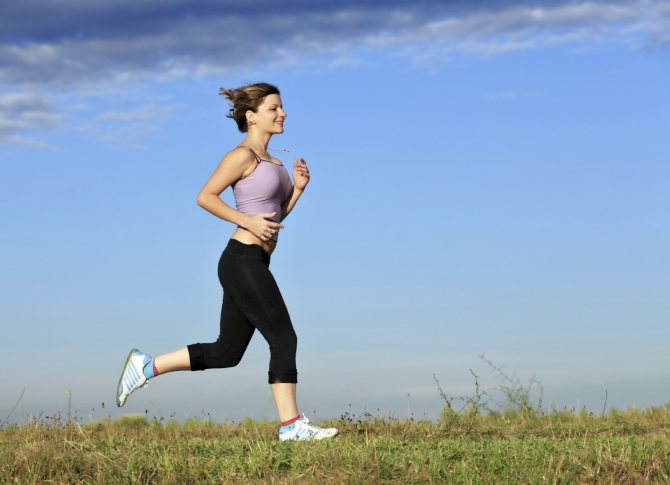
To prevent stroke you need to lead a healthy lifestyle and be physically active
Important! Heavy physical activity, strength exercises, and grueling workouts increase the risk of cerebral hemorrhage.
Bad habits
Tobacco and alcohol are one of the main enemies of our health. The risk of cerebral ischemia and hemorrhagic stroke is significantly reduced in people who have given up these addictions once and for all. Alcohol provokes an increase in blood pressure, and nicotine causes vascular stenosis - which is why they can become catalysts for cerebrovascular accidents.
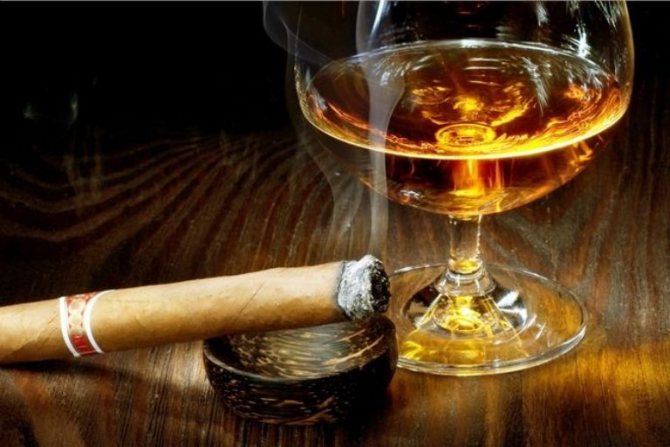
Tobacco and alcohol are friends of stroke; you should completely give up cigarettes and booze to maintain your health
The attitude of doctors towards alcohol is ambiguous. Approximately 80% of strokes are ischemic in nature, that is, they occur due to blockage of the vascular lumen by a blood clot or plaque. In such a situation, small doses of an alcoholic drink (beer, wine) can even play a preventive role, since alcohol has the property of thinning the blood. But this same ability makes a “harmless” glass of beer fatal for a patient at risk of hemorrhagic stroke, when a cerebral hemorrhage occurs due to damage to the vessel wall.
Psychological factors
Chronic stress negatively affects the condition of the heart and blood vessels. Serious emotional and mental stress often leads to cerebral hemorrhages. To prevent a stroke, you must try to reduce anxiety to a minimum: change the situation, environment, take sedatives.

Anxiety, overexertion, stress - this is the first step on the path to a stroke
Medications
Prevention of thrombosis and atherosclerosis plays a leading role in the prevention of cerebral ischemia. For this purpose:
- statins - hypolipidemic drugs to lower blood cholesterol levels;
- antihypertensive drugs (lowering blood pressure);
- anticoagulants (blood thinners);
- antiarrhythmic medications.
Impaired fat metabolism and high levels of cholesterol in the blood cause the development of atherosclerosis. Cholesterol accumulates on the inner walls of blood vessels, forming plaques that narrow the vascular lumen and impede blood flow. Cholesterol plaques can ulcerate and come off completely or partially, blocking the lumen of the vessel. The blood supply to the brain area is disrupted and tissue necrosis develops.
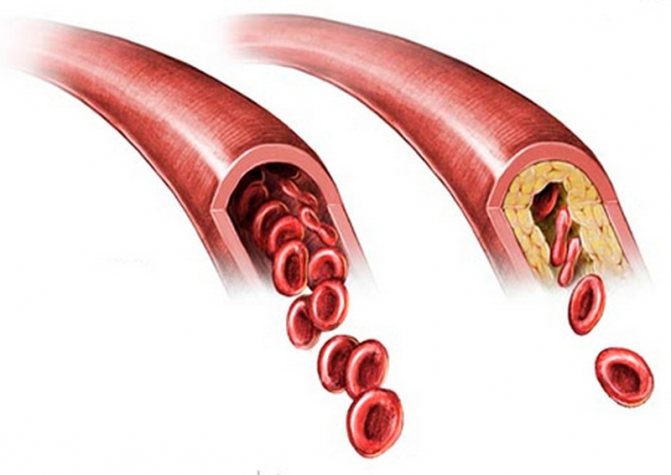
Ischemic stroke can occur due to atherosclerosis, when cholesterol is deposited on the inner walls of blood vessels and this obstructs blood flow.
A chronic increase in blood cholesterol levels by 10% increases the risk of developing a cerebral infarction by 25–30%.
Drugs that normalize fat metabolism and prevent the formation of atherosclerotic plaques significantly reduce the risk of ischemic strokes:
- Pravastatin;
- Niacin;
- Simvastatin.
Antihypertensive and antiarrhythmic drugs are prescribed to treat hypertension and prevent strokes. Therapists select medications individually for each patient. Medicines are taken long-term with mandatory blood pressure monitoring and dosage adjustment by the attending physician.
The following groups of drugs are prescribed:
- ACE inhibitors: Capoten, Enap, Privinil, Monopril, Mavik;
- Verapamil, Diltiazem, Amlodipine;
- Hydrochlorothiazide, Esidrex, Chlorthalidone;
- Bisoprolol, Metoprolol, Carvedilol, Atenolol;
- Diovan, Atakand, Avapro, Kozaar.
Drug therapy for cardiac arrhythmia plays an important role in the prevention of cerebral ischemia. When the rhythm is disrupted, microscopic blood clots form in the heart cavity and on the valves, which enter the bloodstream and can cause thrombosis of small vessels. Patients with arrhythmias, in addition to constantly taking medications, must undergo an ECG every 6 months.
Antithrombotic agents (antiplatelet agents) and anticoagulants should be taken by all patients with atherosclerosis.
Antiplatelet agents prevent platelets from sticking together and forming blood clots. Most often prescribed for this purpose:
- Aspirin;
- Clopidogrel;
- Ticlopidine;
- Dipyridamole;
- Cardiomagnyl.

Aspirin is the most popular blood thinner used to prevent stroke.
In some cases (with atrial fibrillation, artificial heart valves), doctors prescribe indirect anticoagulants:
- Sinkumar;
- Warfarin;
- Phenilin;
- Pradaxa;
- Xarelto.
If necessary, a neurologist can prescribe cerebroprotectors to regulate metabolic processes in the brain:
- Piracetam;
- Cerebrolysin;
- Phezam;
- Ceraxon.
Video - drugs for disease prevention
Brief reminder
- A healthy lifestyle means eliminating bad habits and establishing the correct daily routine.
- Monitoring blood pressure, blood cholesterol levels, ECG as indicated.
- Sports activities.
- Balanced diet.
- Timely somatic diseases.
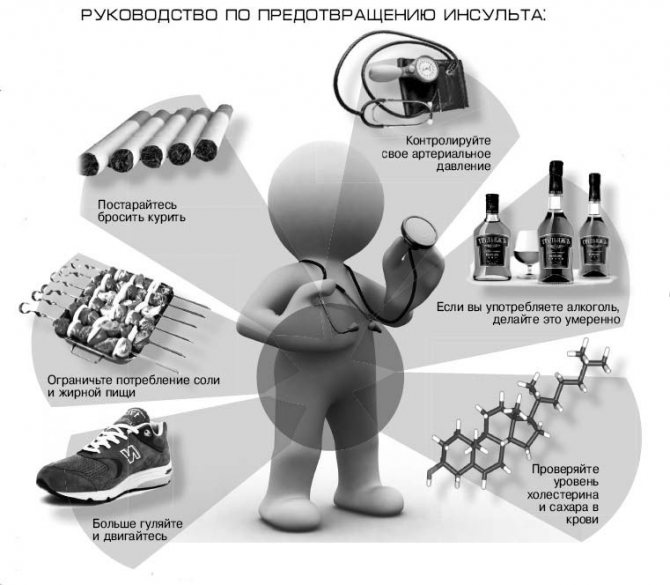
Stroke is much easier to prevent than to cure; everyone should follow simple rules of prevention
How to prevent another stroke?
Secondary prevention focuses on the use of medications and general methods. To prevent relapses, patients who have suffered a stroke must closely monitor their health and follow certain rules:
- give up tobacco and alcohol;
- follow a diet aimed at reducing cholesterol in the blood;
- maintain feasible physical activity - exercise therapy, massage, daily walks in the fresh air;
- monitor your body weight.
Video - therapeutic exercises will help avoid disaster
Treatment options include:
- long-term use of antithrombotic drugs - antiplatelet agents and anticoagulants;
- therapy with antihypertensive drugs;
- traditional medicine;
- if necessary, surgical intervention.
Antithrombotic drugs are one of the most important areas for the prevention of ischemic strokes. These medications need to be taken for a very long time - for several years.
Stroke survivors should be constantly monitored by a therapist, a neurologist, and if they have heart disease, by a cardiologist.
If, to prevent a primary stroke, emphasis should be placed on a healthy lifestyle, then measures to prevent a recurrence of the disease are aimed mainly at drug therapy.
Gallery - preventive measures to prevent relapse

To prevent a recurrent stroke, a neurologist may prescribe therapeutic massage
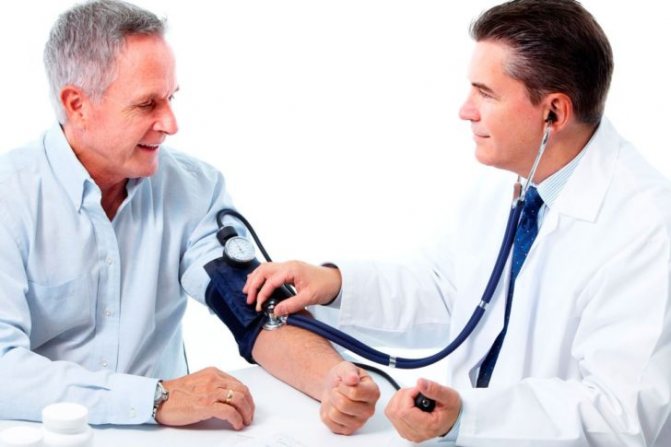
Stroke survivors should strictly control their blood pressure
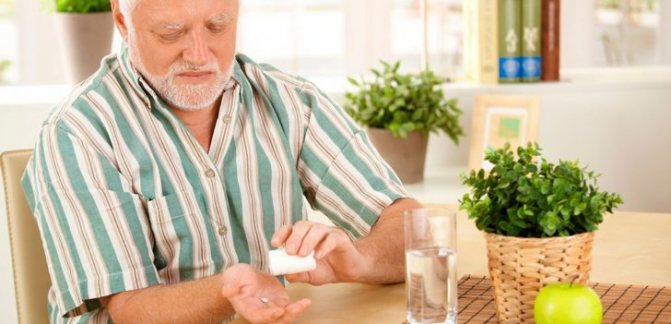
A stroke patient must take medications prescribed by a doctor for a long time
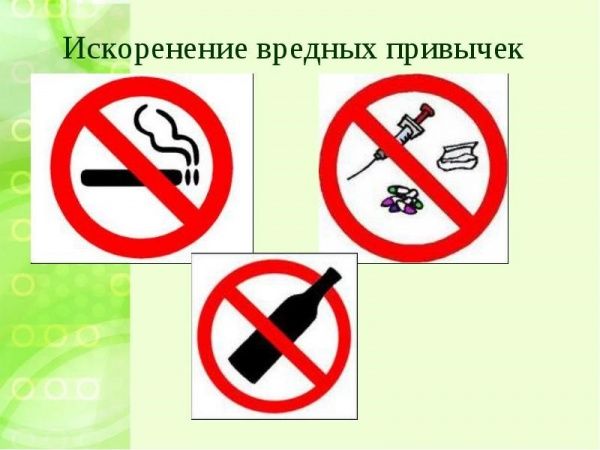
Stroke survivors should not smoke, drink alcohol or take drugs.
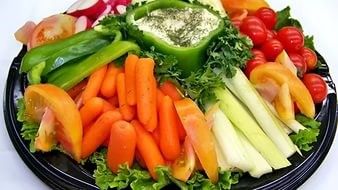
Stroke patients need to eat right

To prevent a recurrent stroke, you need to exercise
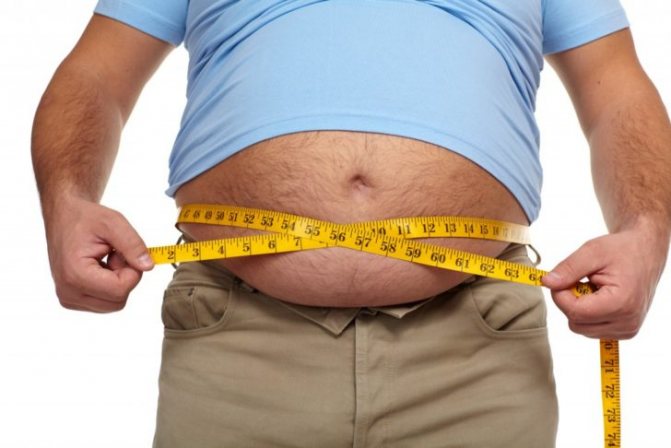
Weight control is an important part of primary and secondary stroke prevention
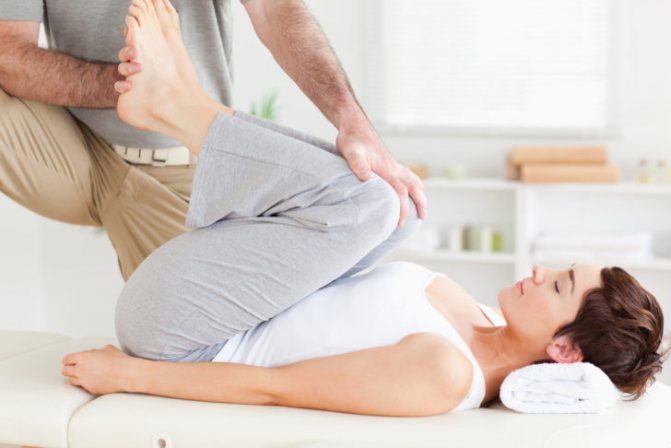
Prevention of recurrent stroke - physical therapy as prescribed by a doctor
It is important to remember that symptoms and signs that indicate a possible stroke should not be ignored. People who seek medical help within the first 2-3 hours after an acute cerebrovascular accident have the best prognosis.
Is it possible to avoid a second strike?
Stroke causes
Doctors prescribe medications to patients, and if they are ineffective, they use surgery. Strict adherence to medical instructions helps reduce the risk of relapse, which is usually fatal.
The goal of secondary prevention is to treat the disease that led to the blockage and eliminate the factors that provoke the brain stroke. To understand whether a stroke can be prevented, you need to understand the seriousness of the situation and follow the doctor’s advice. It is necessary to increase the elasticity of blood vessels and strengthen the body’s protective reactions. The victim is required to follow secondary preventive measures throughout his life. This will reduce the risk of relapse and improve a person's quality of life.

Secondary measures for the prevention of stroke are differentiated into drug and non-drug measures. The latest methods for preventing stroke include eating a healthy diet, giving up bad habits, losing weight and being physically active.
Drug prevention is aimed at preventing stroke and includes several groups of drugs:
- Nootropic drugs. These medications help treat the cardiovascular system and increase the production of ATP and proteins in brain tissue. When taken, the membrane structure is normalized and neuron conductivity is improved. Prevention tablets improve blood quality and activate cerebral circulation. This group includes the following drugs: Aminalon, Glycine, Pantogam, Nootropil, Gliatilin, etc.
- Blockers (Losartan, Valtarsan, Amlodipine, Adalat, etc.). Medicines for the prevention of stroke, the action of which is aimed at blocking signals from certain groups of receptors.
- Inhibitors and diuretics. Medicines have a vasodilating effect, help reduce cardiac activity, and minimize the development of stroke. Diuretics normalize blood pressure, helping to remove excess fluid from the body. These include powerful diuretics - Torasemide, Diuver, Furosemide, drugs with moderate action - Dichlorothiazide, Arifon.
- Central function drugs (Cleophilin, Labetalol, Methyldopa, Albarel) act on some brain receptors and are used to stabilize blood pressure and during hypertensive crisis. Prevention medications belonging to this group must be taken under the strict supervision of a physician.
- Antiplatelet agents. Stroke prevention medications are used to prevent the formation of blood clots and blockage of blood vessels (Cardiomagnyl, Aspecard). To combat atherosclerosis, Atorvastatin and Aspecard are used for life, this reduces the possibility of stroke.
- Valerian and motherwort in tablets or tincture, Persen and others are used as preventative sedatives. The drugs help fight stress, normalize sleep, and strengthen the nervous system. They are also prescribed after a stroke.
Stroke prevention medications should not be chosen independently. Each remedy must be prescribed by a doctor.
Features of preventive measures in women and men
In young women, the risk of cerebral infarction is associated with prolonged use of oral contraceptives, hormonal disorders (high levels of estrogen lead to increased blood clotting and the formation of blood clots), and migraine attacks, which are characterized by spasms of cerebral vessels. Important factors in the occurrence of stroke in women are smoking, alcoholism and stress.
In order to prevent cerebral stroke, women should:
- treat hormonal disorders and diseases that provoke them: endometriosis;
- polycystic disease;
- mastopathy;
The risk of stroke during pregnancy is high due to changes in the functioning of the cardiovascular system and increased blood pressure. To avoid the development of acute cerebrovascular accident, the expectant mother should visit the antenatal clinic on time, monitor blood pressure, eat right and exercise enough. It is imperative to monitor weight gain and take medications only as prescribed by a doctor.
Although both men and women are at risk of stroke, statistics show that men are affected more often than women and at a younger age. This is due to the fact that men abuse alcohol, tobacco and drugs too much, are more susceptible to stress, severe physical strain and take less care of their health.
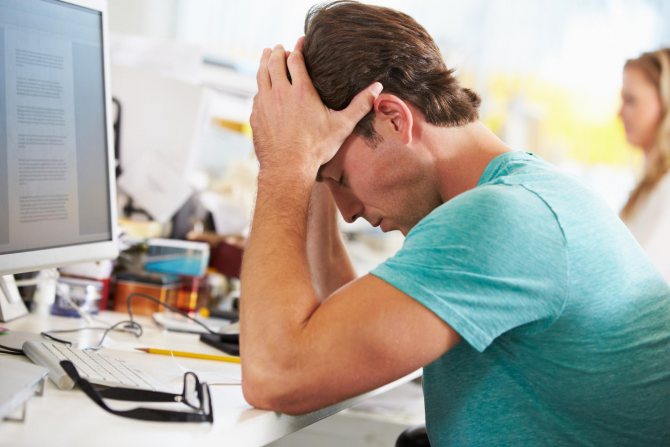
Men are more susceptible to stroke than women due to stress, smoking, alcoholism and neglect of their health
Stroke in younger men, their risk of acute cerebrovascular accident increases by the age of 40, while in women the threat appears only by the age of 55–60, during menopause.
Video - stroke in men
Antihypertensive therapy
Hypolipidemic therapy is based on lifestyle changes. Following the rules of proper nutrition, playing sports, and reducing stressful situations allows you to consolidate the positive effect of therapy for a long time.
The basic principles of the hypolipidemic approach include:
- diet based on national cuisine
- variety of menu
- replacing “problem” dishes with plant-based products
- reducing salt intake per day
- eliminating sweets from the diet
- engage in physical activity based on the individual characteristics of the body
In mild forms of diseases associated with blood vessels, blood pressure, as well as in the case of being in a risk group, doctors advise starting antihypertensive therapy without the use of medications. It is strictly prohibited to prescribe medications on your own, as it requires a course of treatment and compliance with the dosage.
In order to confirm the need for antihypertensive therapy, in non-urgent cases, the doctor usually asks the patient to take regular blood pressure measurements in the first quarter (less often six months), recording the results in a notebook. At the same time, the patient will need to adhere to several practical tips:
- if necessary, reduce body weight
- eliminate alcohol consumption
- get rid of the smoking habit
- add exercise to your daily routine
If, after the allotted period and strict adherence to the instructions, the patient does not feel relief, and his indicators are still far from ideal, then special drugs are added to non-drug antihypertensive therapy. You should start taking them with one medicine. If it is impossible to achieve the desired effect, the dose is either increased or another drug is introduced into the course.

According to studies, for mild or moderate blood pressure-related diseases, monotherapy is sufficient in half of the cases. Adding a second drug increases success to 80%.
Drug treatment for stroke can be divided into groups:
- hypotensive;
- nootropic;
- blood thinners;
- decongestants;
- cardiotonic;
- cerebral.
Drugs for brain stroke are selected taking into account the symptoms. In addition to the symptoms that have arisen, the doctor, when selecting treatment, takes into account the mechanism of development of stroke: ischemia or hemorrhage.
In this form, the cessation of blood flow to an area of the brain occurs due to blockage of the artery by a blood clot or atherosclerotic plaque.
Treatment of cerebral ischemia is aimed at restoring blood flow to an area of brain tissue. Let's see what drugs are prescribed:
- Nootropic drugs. Neuroprotectors will reduce hypoxia, reduce the area of the affected area and prevent further damage to neurons.
- Blood thinner. Medicines after stroke that reduce blood viscosity are necessary to improve cerebral blood flow and prevent the recurrence of blood clots.
- Sedatives. Sleeping pills and sedatives for cerebral stroke accompanied by an ischemic process are necessary in the acute stage of the disease. Providing rest reduces the area of damage to brain cells and prevents early post-stroke complications.
- Hypotensive. Blood pressure-lowering medications are needed to prevent unwanted stress on blood vessels.
- Diuretics. Necessary to prevent cerebral edema in the acute stage of the disease.
The list of medications can be supplemented with statins and vitamin-mineral complexes. Which medications to take and in what dose are selected individually.
In the acute stage, these are droppers or injections for recovery after a stroke, and in a later period, when rehabilitation of post-stroke complications is carried out, medications are prescribed in tablets. Drugs for ischemic stroke are selected individually, taking into account the abnormalities that have arisen and the stage of the disease.
You can often hear requests from relatives to prescribe the most effective pills for the brain after a stroke or to prescribe injections to speed up rehabilitation. But there is no “super remedy” and treatment after stroke is lengthy, despite the fact that the doctor decides what medications to treat, taking into account the mechanism of the pathology and the nature of the abnormalities that have arisen.
Rupture of a vessel, accompanied by the formation of an intracranial hematoma or blood soaking of the brain tissue.
Treatment of hemorrhagic stroke with blood soaking into brain tissue differs slightly from ischemic brain damage. Medicines are prescribed for recovery after stroke with decongestant, hypotensive, neuroprotective and sedative effects.
The only difference is that medications for hemorrhagic stroke should not only prevent the development of oxygen starvation in brain cells, but also prevent further hemorrhage. The list of stroke medications is expanding:
- ganglion blockers;
- angioprotectors.
When a large hematoma forms, to prevent compression of the brain structure, patients undergo surgical removal of blood accumulations. After the blood clot is removed, standard drugs are used to treat stroke.
Prevention of disease in children and adolescents
Do not think that the disease occurs only in adults. The child may also have a stroke. Only the reasons that can provoke it are somewhat different:
- progressive pathologies of the heart and blood vessels: defect;
- rheumatic heart disease;
- endocarditis;
- arrhythmias;
- hereditary vascular abnormalities;
- vasculitis (inflammatory damage to the vascular walls);
- meningitis;
Vascular disorders in children are mainly hereditary, and the development of diseases that can ultimately cause a stroke is facilitated by stress and severe stress (physical and mental).

A stroke in a child can be triggered by heavy workload and stress, and the background may be vascular pathology.
In order to prevent hemorrhage or cerebral infarction, the child must be thoroughly examined, especially if he is bothered by headaches. You definitely need to consult a pediatrician and neurologist before visiting various sports sections. The baby needs to be protected from stress as much as possible, monitored for compliance with the daily routine, and fed properly. At the slightest suspicious symptoms, you should consult a doctor.
Parents must remember: the faster the child receives qualified medical care, the higher the chances of recovery.
Folk remedies
Folk remedies play a significant role in stroke prevention. You just need to remember that herbs alone cannot protect against the disease, you need to use all methods in combination.
Strengthening the nervous and cardiovascular systems, as well as lowering cholesterol levels in the blood, are the main directions of traditional medicine for the prevention of pathology.
- Herbal mixture to strengthen the heart muscle. Mix motherwort, oregano, and meadowsweet herbs in equal parts (40 grams each), add 0.5 liters of hot water, leave for several hours. Take 1 dessert spoon before meals three times a day.
- Barberry tincture. Pour three large spoons of barberry roots with diluted alcohol or vodka - 0.5 liters. Leave for 3 days, drink a teaspoon twice a day.
- Lemon-pine infusion for the prevention of atherosclerosis. Prepare a pine infusion: pour a tablespoon of pine needles with boiling water in a volume of 300 ml, leave for half an hour. Grate half of the peeled lemon, add to the pine infusion, and leave. Take 2 tablespoons 3 times a day.
- Sea buckthorn oil. To reduce cholesterol levels, you need to take the oil in courses of 1 tablespoon per day for a week, repeat every month.
- Sophora japonica to strengthen blood vessels. Pour the dry raw material with medical alcohol (1 tablespoon of herb per 5 tablespoons of alcohol). Store the tincture in a dark place in a glass container and leave for 3 days. Take 20 drops three times a day after meals.
- Lemon-honey paste for cleansing blood vessels and preventing atherosclerosis. Grind the washed orange and lemon together with the peel in a meat grinder. Add a large spoonful of honey to the resulting mass and mix. Store the paste in the refrigerator, take 1 dessert spoon after meals.
- Strengthening blood vessels with common rapeseed. Pour boiling water over the herb at a rate of 1:20, leave for 30 minutes. Strain, take a third of a glass 4 times a day.
- Phyto-pillow for stress relief. Fill a small pillowcase with dry herbs - valerian, motherwort, lemon balm, juniper, mint. Place at the head of the bed. The aroma of herbs will calm the nervous system.
Traditional methods of prevention in the photo
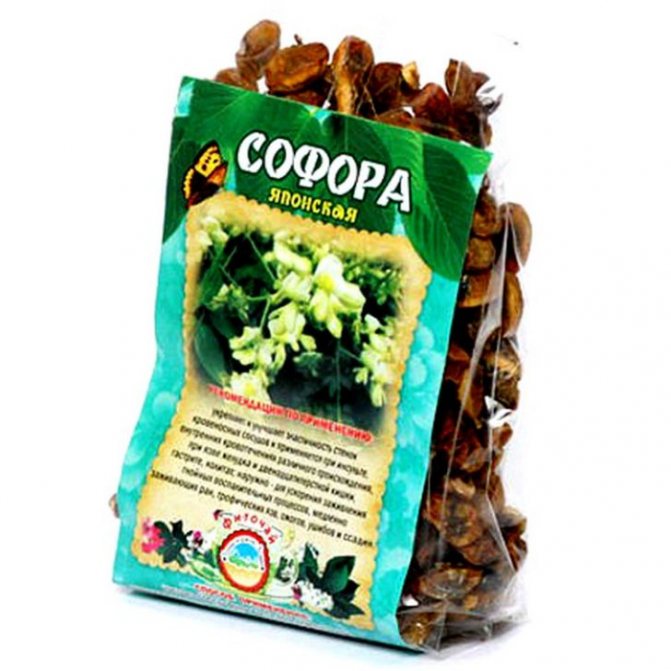
Sophora tincture strengthens blood vessels

Crescent in the form of an infusion is used to strengthen blood vessels
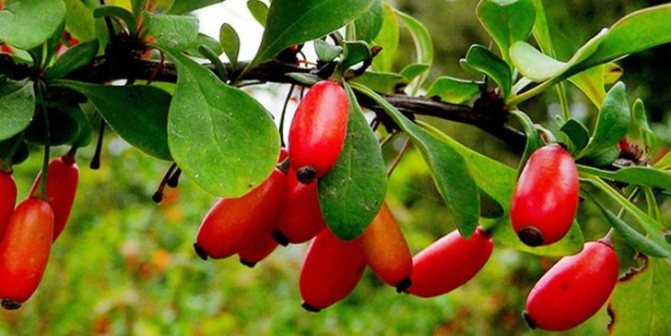
Barberry root strengthens the cardiovascular system
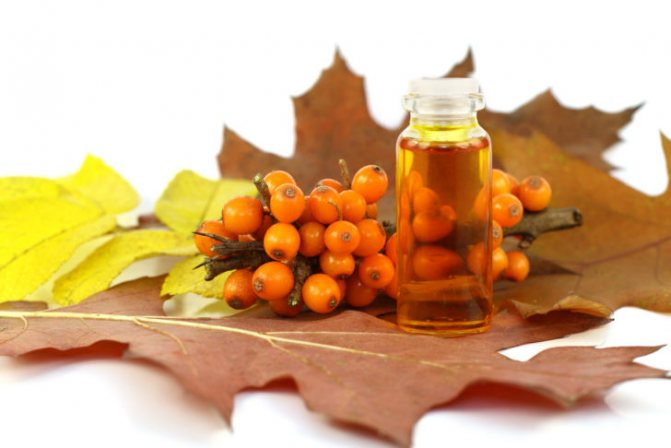
Sea buckthorn is used to prevent atherosclerosis
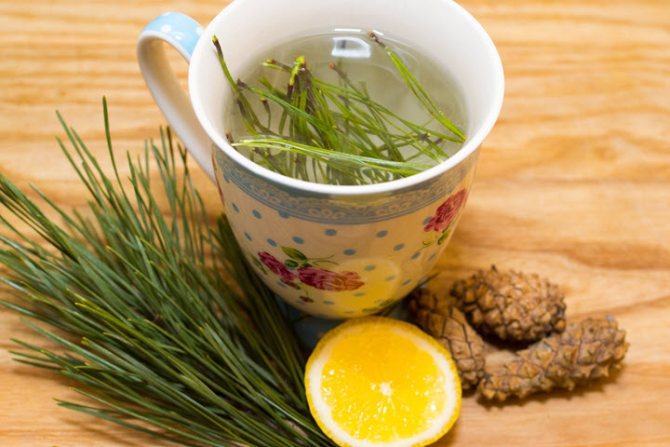
Lemon-pine infusion is recommended to be taken if there is a threat of developing atherosclerosis
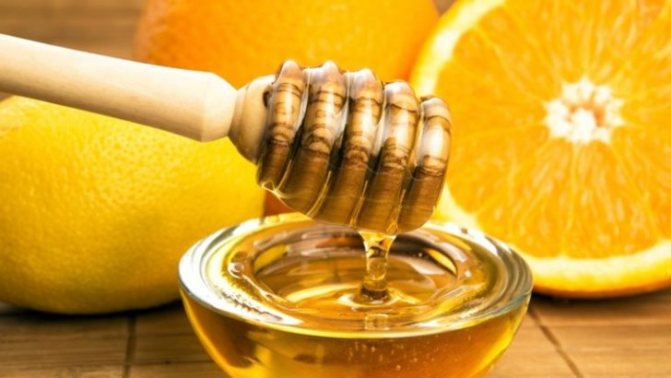
A paste of lemon, orange and honey strengthens and cleanses blood vessels.
In addition to herbs, alternative methods of preventing stroke are acupuncture and hirudotherapy. Acupuncture should only be used as prescribed by a physician and should be performed by an experienced practitioner. Hirudotherapy is used to reduce the risk of blood clots.
